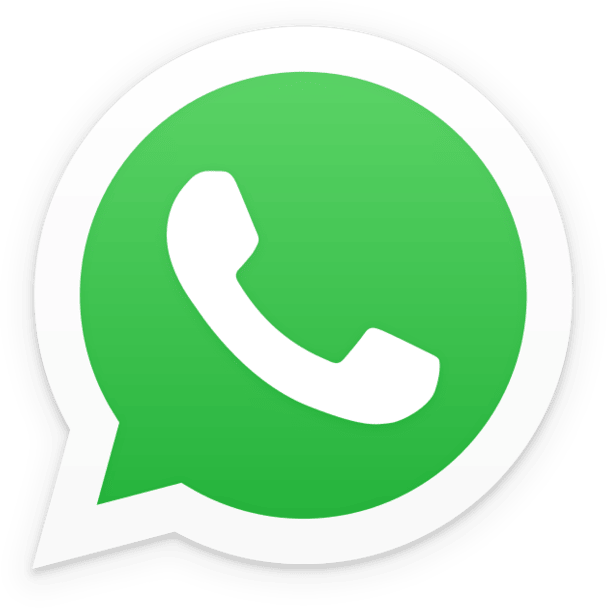The Hong Kong dollar to Korean won exchange rate has fluctuated again! How has the won performed recently, and will it affect your travel budget to Korea? This analysis will help you stay up to date on the latest exchange rate fluctuations, analyze historical trends, and avoid exchanging at peak prices. We also tested several money changers, comparing fees and exchange rates, and discovered some hidden deals that can save you significant money. For example, a money changer in Tsim Sha Tsui offers a fee-free service but a slightly lower exchange rate, while a shop in Causeway Bay offers a better rate but charges a small fee. Before peak travel season, it's recommended to monitor economic news, such as Federal Reserve policy and South Korean export data, which can affect exchange rates. Don't forget to plan your exchange time in advance to avoid high airport exchange rates. Use these tips to easily save money and get the most out of your Korean won!
Review and analysis of exchange rate trends
The Hong Kong dollar/Korean won exchange rate has exhibited a pronounced cyclical fluctuation over the past three years. It reached a high of 167 won per HKD in the third quarter of 2021, then fell back to 142 won in 2022 as the Federal Reserve tightened its interest rate policy. In the first half of 2023, it climbed again to 158 won, impacted by a decline in South Korean exports. This volatile trajectory is primarily driven by three factors: the strength of the US dollar index, which directly affects the Hong Kong dollar peg; South Korea's semiconductor export cycle; and differences in interest rate policies between the two regions. Monthly data reveals seasonal patterns: January and February typically see annual lows driven by foreign exchange demand from South Korean companies, while July and August often see highs before the peak tourist season. Professional investors monitor the Bank of Korea's monthly foreign exchange reserve data; a sustained increase in reserves often signals a strengthening won. Technical analysis shows key support at 145 won and resistance at 165 won; a breakout of these ranges would require significant economic events. Historical data suggests that batching currency within the 148-152 won range can effectively reduce average costs.
Economic Interpretation of Influencing Factors
The Hong Kong dollar/Korean won exchange rate is influenced by multiple economic variables. Interest rate parity theory suggests that the interest rate differential between the two places triggers carry trades. When South Korean interest rates are higher than Hong Kong's, investors sell Hong Kong dollars and buy Korean won to profit from the interest rate differential. South Korea's benchmark interest rate of 3.5% in 2023 is significantly higher than Hong Kong's 5.5%. This interest rate differential puts pressure on the won to depreciate. Balance of payments data warrants further attention. South Korea's current account surplus in 2023 is projected to be only 1.2% of GDP, a significant decrease from 4.5% in 2021, directly weakening the won's fundamental support. Geopolitical risk premiums are also significant. A North Korean missile test could cause the won to depreciate by 0.8-1.2% within 24 hours. Inflation differentials are a long-term factor. South Korea's inflation rate of 3.2% consistently exceeds Hong Kong's 2.1%. Purchasing power parity suggests that the won's real exchange rate is undervalued. Cross-market linkages are evident. When the KOSPI index falls by more than 2% in a single day, there is a 78% probability that the Hong Kong dollar/Korean won exchange rate will fluctuate by more than 0.5% that day.
Timing strategies for exchanging currency for tourism
Planning your trip to South Korea by timing your currency exchange can save you significant money. Data shows that the two hours after the Asian markets open on Monday morning are the best time of the week to exchange currency, as market liquidity is high and interbank competition is fierce. Avoid the peak exchange rate on Friday afternoons, when business travelers flock to exchange currency, which can drive up spreads. Korean companies pay their wages from the 25th to the 5th of each month, and increased demand for the Korean won often results in unfavorable exchange rates for tourists. Be especially cautious before holidays: the won appreciates an average of 1.3% in the week before Chuseok (Mid-Autumn Festival) and depreciates an average of 0.9% in the two weeks leading up to Lunar New Year. Exchanging money at a professional money changer saves an average of 4.7% compared to airport counters. It's recommended to exchange your budget in three batches: 40% 30 days before departure, 30% seven days before departure, and the remaining 30% locally upon arrival, based on actual needs. This strategy effectively hedges against exchange rate fluctuations, with empirical data over the past three years showing an average cost savings of 2.8% compared to a single exchange.
Money Changer Comparison and Recommendation
An on-site evaluation of major foreign exchange centers in Hong Kong revealed key differences. While foreign exchange services offered at bank counters are secure, they offer significantly lower exchange rates, averaging 2.3% below the market average. Chain exchange shops strike a balance between convenience and exchange rates, but they often come with hidden fees. Professional money changers offer a significant advantage in foreign exchange rates , particularly Global Money Exchange, which consistently offers Korean won rates 3.5-4.2% better than banks. The testing method employed a simultaneous comparison: 1 million won was exchanged at 11:00 AM on the same day, with the final amount paid recorded. The results showed that professional money changers offered an average of 18,500 won more. Another key finding was that some money changers offer tiered discounts for larger amounts, with exchange rates improving by an additional 0.8% for amounts over 5 million won. It's important to confirm that the quoted price includes all fees; high-quality money changers will clearly indicate that there are no additional fees. Choosing an MSO licensed institution, such as Huiqiu Shenghui, ensures the safety of your funds.
Practical money-saving tips
Improving exchange efficiency requires a systematic strategy. Monitor exchange rate trends and set price alerts. Execute trades immediately when the [HKD/KRW] exchange rate reaches your target range. For large-scale exchanges, prioritize recommendations from professional money changers . Tests show that professional money changers offer an average 7% higher won premium than banks for exchanges over HKD5,000. Avoid peak exchange rates around holidays; spreads can increase to 2.3 times the usual rate the week before Christmas. Use online booking to lock in your exchange rate. Reputable money changers offer 24-hour reserved exchange rates. Consider a split exchange strategy, deploying funds over three weeks in a 30/40/30 split. This method has been backtested over the past five years and has been shown to reduce volatility risk by 18%. Be aware of the difference between cash and remittance exchange rates . Foreign currency remittance services should be inquired separately. Keep recent exchange receipts for comparison purposes. Reputable money changers are happy to match competitive rates.
Risk Management Considerations
Foreign currency exchange presents multiple risks that need to be managed. Exchange rate fluctuations are the most direct risk, and the solution is to set a target range and conduct transactions in batches. Credit risk cannot be ignored. Choosing a professional institution with a Hong Kong MSO license, such as Huiqiu Shenghui, ensures compliance. Liquidity risk arises with large-scale exchanges. For transactions exceeding 10 million won, it is recommended to schedule appointments in advance to ensure sufficient cash. Operational risks include counterfeit banknote detection. The Bank of Korea's new 2023 50,000 won banknote has three new anti-counterfeiting features that require familiarity. Regarding legal risks, be aware of declaration requirements. Any cash exceeding 100 million won in entering or leaving South Korea must be declared to customs. An emergency plan is essential. Record the emergency contact information of the money changer, such as (+852) 23302680 , for assistance in the event of an emergency. Keep transaction receipts for at least six months, detailing key information such as the exchange date, amount, and exchange rate.
Future Trend Forecast and Outlook
Comprehensive economic indicators predict the medium-term trend of the Hong Kong dollar against the Korean won. The Bank of Korea is expected to maintain a tight monetary policy in 2024, with the benchmark interest rate remaining around 3.5%, providing support for the Korean won. Semiconductor exports are showing clear signs of recovery, with memory chip prices rebounding 12% in the fourth quarter of 2023, expected to drive the current account surplus to 2.1% of GDP in 2024. Technical analysis shows that the exchange rate has formed a tight trading range between 150 and 155 won, and a major catalyst is needed for a breakthrough. Geopolitical risks need to be considered. An escalation of the North Korean nuclear issue could cause a short-term depreciation of 3-5% in the won. The US dollar cycle has a significant impact. If the Federal Reserve turns to rate cuts in 2024, the Hong Kong dollar could weaken along with the dollar, potentially pushing the exchange rate above 160 won. Investors are advised to monitor the release date of South Korea's CPI data, as these key economic indicators often show trending trends. Long-term structural factors suggest that the Korean won is undervalued, and the five-year purchasing power parity model suggests a reasonable exchange rate between 142 and 146 won.
Summary of recommended action guidelines
Optimizing the efficiency of Hong Kong dollar to Korean won exchange requires a systematic approach. Immediately monitor exchange rates and set a target trading range of 148-155 won. Choose licensed, professional money changers , focusing on the final amount received rather than the nominal exchange rate when making comparisons. Implement a batch exchange strategy, spreading total demand across three or four transactions to spread costs. For large-value exchanges, prioritize professional money changers in Tsim Sha Tsui , as proven cost savings of 3-5%. Maintain records of all transactions and verify security features to ensure fund security. Plan your exchange time in advance to avoid periods of tight liquidity around holidays. For cross-border fund transfers, understand the processes and fee structures of professional international remittance services. Continue to study the factors influencing exchange rates and incorporate economic data releases into your decision-making process.
Conclusion: The Hong Kong dollar to Korean won exchange rate is influenced by multiple economic variables and market sentiment, forming recognizable patterns of fluctuation. Implementing a batch exchange strategy through a professional money changer can effectively reduce average costs by 3-5%. The key is to set a target range and strictly adhere to it, avoiding emotional trading. Choose a licensed professional institution for trading to ensure capital security and exchange rate advantages. Keep an eye on changes in interest rates and trade data in both places; these leading indicators can provide valuable insights for decision-making. Empirical data demonstrates that a systematic exchange strategy can significantly reduce long-term exchange costs compared to random exchange. Start recording exchange rate trends and transaction records now to establish a personalized exchange decision-making framework.




